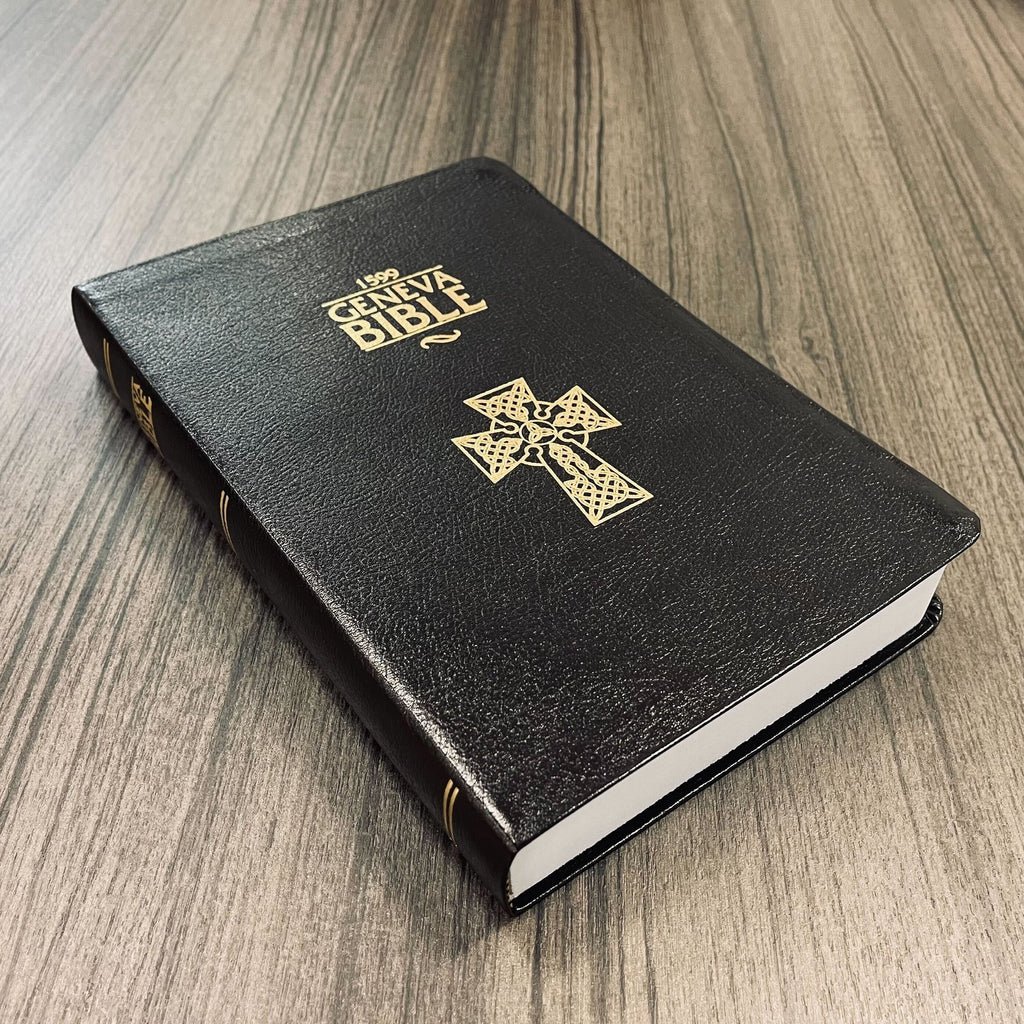When it comes to the Geneva Bible, an intriguing question arises: how many books are included in this unique translation? The Geneva Bible is renowned for its historical significance, but its composition remains a mystery to many. Are you curious to uncover the answer? Let’s explore the contents of the Geneva Bible and discover the total number of books it holds. Prepare to be surprised by the breadth and depth of this remarkable collection.
Table of Contents
Exploring the Geneva Bible

In this section, we will delve into the rich history and profound significance of the Geneva Bible, a translation that left an indelible mark on both religious and literary realms. Its popularity during its time is a testament to its enduring impact.
The Geneva Bible, first published in 1560, holds a significant place in the history of English Bible translations. It was not only a translation of the Scriptures but also a comprehensive study tool, featuring extensive annotations and commentary by influential Protestant theologians of the time.
This version of the Bible emerged during a period of religious upheaval and political turmoil in England. Many scholars fled to Geneva, Switzerland, seeking refuge from religious persecution. It was in this vibrant intellectual center that they produced the Geneva Bible, aiming to create a translation that would accurately reflect their theology and teachings.
“The Geneva Bible played a crucial role in shaping the religious and social landscape of its time.”
With its meticulous translation and emphasis on clarity and accessibility, the Geneva Bible quickly gained popularity among both clergy and laypeople. It offered contemporary readers a version of the Bible that was not only understandable but also deeply meaningful.
One of the key reasons for the Geneva Bible’s popularity was its inclusion of chapter divisions, verse numbers, and extensive cross-references. These features made it easier for readers to navigate and study the Scriptures, providing invaluable guidance for personal devotion and theological exploration.
The Geneva Bible also had a profound impact on the English language itself. Its language became highly influential in the development of English literature, with phrases and expressions from its pages finding their way into the works of renowned writers such as William Shakespeare and John Milton.
Geneva Bible Popularity
The popularity of the Geneva Bible extended beyond religious circles. Its widespread usage among the general population contributed to its significance as a cultural and social force during the sixteenth and seventeenth centuries.
Its accessibility and comprehensibility made it a cherished possession in many households, even among those who were not adherents of the Protestant faith. The Geneva Bible became a symbol of intellectual curiosity and spiritual exploration, transcending religious boundaries.
Despite being overshadowed by later translations, the Geneva Bible’s enduring influence cannot be ignored. Its historical importance, linguistic impact, and enduring popularity firmly establish it as a key milestone in the development of the English Bible.
| Significance of the Geneva Bible | Popularity of the Geneva Bible |
|---|---|
| Key translation during religious upheaval | Widely used among clergy and laypeople |
| Comprehensive study tool with annotations | Influential across religious and social spheres |
| Impact on English literature and language | Cherished possession in households |
Contents of the Geneva Bible
In the Geneva Bible, the books included follow a specific canon, which is the collection of religious texts recognized as authoritative. This translation includes both the Old Testament and New Testament, organizing them in a distinct manner.
Old Testament
The Old Testament in the Geneva Bible consists of numerous books that are foundational to the Judeo-Christian faith. These books include:
- Genesis
- Exodus
- Leviticus
- Numbers
- Deuteronomy
- Joshua
- Judges
- Ruth
- 1 Samuel
- 2 Samuel
- 1 Kings
- 2 Kings
- 1 Chronicles
- 2 Chronicles
- Ezra
- Nehemiah
- Esther
- Job
- Psalms
- Proverbs
- Ecclesiastes
- Song of Solomon
- Isaiah
- Jeremiah
- Lamentations
- Ezekiel
- Daniel
- Hosea
- Joel
- Amos
- Obadiah
- Jonah
- Micah
- Nahum
- Habakkuk
- Zephaniah
- Haggai
- Zechariah
- Malachi
The Old Testament constitutes the Hebrew Bible or Tanakh and serves as the foundation for the Christian faith. It contains historical accounts, laws, poetry, prophecies, and wisdom literature.
New Testament
The New Testament in the Geneva Bible focuses on the life, teachings, death, and resurrection of Jesus Christ, along with the establishment and growth of the early Christian Church. The books included in the New Testament are:
- Gospel According to Matthew
- Gospel According to Mark
- Gospel According to Luke
- Gospel According to John
- Acts of the Apostles
- Epistle to the Romans
- Epistle to the Corinthians 1
- Epistle to the Corinthians 2
- Epistle to the Galatians
- Epistle to the Ephesians
- Epistle to the Philippians
- Epistle to the Colossians
- Epistle to the Thessalonians 1
- Epistle to the Thessalonians 2
- Epistle to Timothy 1
- Epistle to Timothy 2
- Epistle to Titus
- Epistle to Philemon
- Epistle to the Hebrews
- Epistle of James
- First Epistle of Peter
- Second Epistle of Peter
- Epistle of John 1
- Epistle of John 2
- Epistle of John 3
- Epistle of Jude
- Revelation
The New Testament provides insight into the teachings of Jesus, the apostolic letters, and the apocalyptic vision of the future.
By studying the contents of the Geneva Bible, readers can gain a comprehensive understanding of the biblical narrative from the Old Testament to the New Testament.
The Total Number of Books in the Geneva Bible
Now that we have explored the history and contents of the Geneva Bible, let’s address the main question at hand: how many books are included in this unique translation? The Geneva Bible consists of a total of 80 books in its complete collection.
Here is the breakdown of the number of books in each section of the Geneva Bible:
| Section | Number of Books |
|---|---|
| Old Testament | 73 books |
| New Testament | 27 books |
| Total | 80 books |
The Geneva Bible’s inclusion of 73 books in the Old Testament and 27 books in the New Testament makes it a comprehensive and extensive biblical translation. This rich collection encompasses historical accounts, poetry, wisdom literature, prophetic writings, and the teachings of Jesus and his disciples.
The diverse range of books in the Geneva Bible provides readers with a comprehensive understanding of biblical teachings and insights into the religious and cultural context of the time. Its extensive collection makes it a valuable resource for scholars, theologians, and religious enthusiasts alike.
Conclusion: The Unique Collection of the Geneva Bible
Throughout this article, we have explored the fascinating world of the Geneva Bible, uncovering its distinctive features and qualities that set it apart from other Bibles of its time.
One of the most notable aspects of the Geneva Bible is its unique translation. While previous English versions had been translated primarily from the Latin Vulgate, the Geneva Bible was the first to be translated directly from the original Greek and Hebrew texts. This approach resulted in a more accurate and accessible translation for English readers, making the Geneva Bible a groundbreaking achievement in biblical scholarship.
But it’s not just the translation that makes the Geneva Bible collection remarkable. Another standout feature is its extensive annotations. The translators of the Geneva Bible provided detailed commentary, cross-references, and explanatory notes throughout the text, enhancing readers’ understanding of the Scriptures and offering valuable insights into the theological and historical context.
In addition to its unique translations and annotations, the Geneva Bible collection also includes several other distinctive elements. It features elaborate woodcut illustrations, a comprehensive table of contents, and a useful set of study aids, such as maps, genealogical charts, and lists of weights and measures. These additions further enrich the reading and study experience, making the Geneva Bible a prized possession for both scholars and ordinary believers.
FAQ
How many books are in in the Geneva Bible?
The Geneva Bible consists of a total of 80 books. This includes both the Old Testament and the New Testament.
What is the history and significance of the Geneva Bible?
The Geneva Bible holds great historical and religious significance. It was first published in 1560 and played a crucial role in the Protestant Reformation. This translation, completed by English exiles in Geneva, became immensely popular and influential among English-speaking Protestants. The Geneva Bible also introduced many features, such as chapter and verse numbering, that have become standard in modern Bibles.
What are the contents of the Geneva Bible?
The Geneva Bible includes the canonical books of the Old Testament and the New Testament. It follows the Protestant canon, which includes 39 books in the Old Testament and 27 books in the New Testament. The arrangement and organization of the books in the Geneva Bible follow a similar order to other English Bibles of its time.
How many books are there in total in the Geneva Bible?
The Geneva Bible has a total of 80 books. The Old Testament consists of 66 books, including historical, poetic, prophetic, and wisdom literature. The New Testament contains 14 books, including the four Gospels, the Acts of the Apostles, the Pauline Epistles, the General Epistles, and the Book of Revelation.
What makes the Geneva Bible a unique collection?
The Geneva Bible stands out for its unique features and qualities. It was one of the first English Bibles to be translated directly from the original languages of Hebrew, Aramaic, and Greek. Additionally, it includes extensive marginal notes, known as “Geneva notes,” which provide commentary and explanations of the text. These annotations were deeply influential and contributed to the Bible’s popularity and usage among English-speaking Protestants during its time.

Rockin’ the faith, one verse at a time!
Growing up, the Bible’s stories deeply impacted me. Now, with over 15 years of preaching experience, I blend timeless teachings with modern technology, making them relevant for today’s world.
Bible Hub Verse is my platform to share historical insights and thought-provoking articles, exploring both familiar and uncommon Christian topics. My passion is building a welcoming online space for everyone to learn, grow in their faith, and discover the Bible’s enduring message.
Join the journey!
God bless you.






